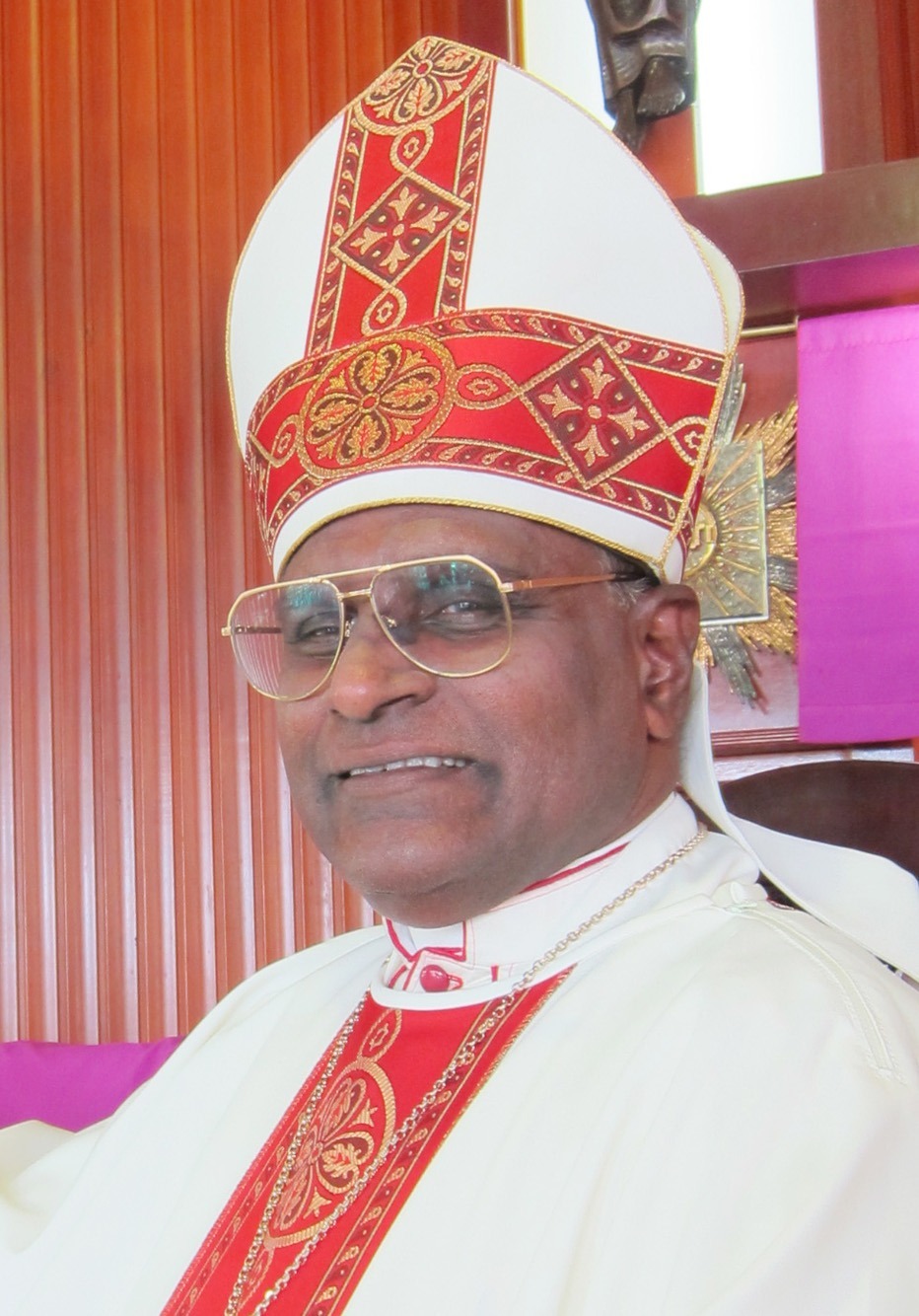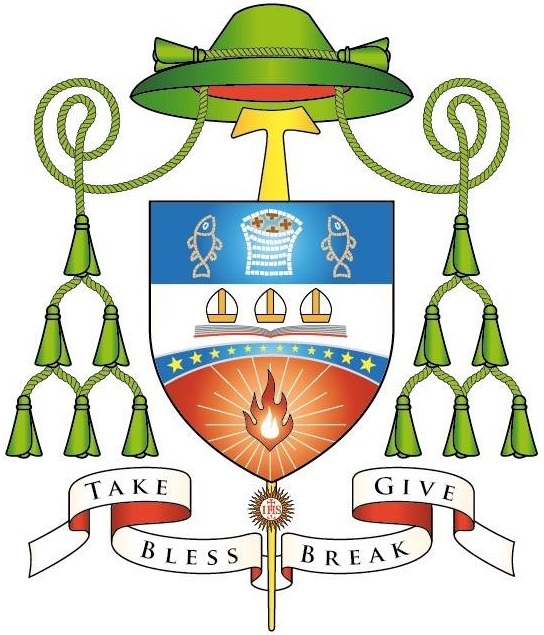Rt. Rev. Bernard Paul, DD
Bishop (2016 – PRESENT)
Born: 6 July 1953 (Kuala Lumpur)
Ordained Priest: 21 July 1989
Appointed Bishop: 19 November 2015
Ordained Bishop: 12 January 2016
Residence:
Bishop’s House, Majodi Centre,
2101 Jalan Masai, Plentong,
81750 Masai, Johor
Tel: 07-3871121
Fax: 07-3872498
Email: [email protected]

Coat of Arms

Meaning of Coat of Arms
The ecclesiastical hat is a distinctive part of the achievement of arms of a Roman Catholic cleric. This hat, called a galero (or gallero), was originally a pilgrim’s hat like a sombrero.
The galero is ornamented with tassels (also called houppes or fiocchi) indicating the cleric’s current place in the hierarchy. A bishop’s galero is green with six tassels on each side.
Above the shield is a Tau cross, a symbol commonly used by St Francis of Assisi who was touched by his reading of Ezekiel 9:4. Being commonly used by the Franciscans until now, this symbol speaks of spiritual and social transformation. The simplicity of the Franciscan charism continues to be an inspiration to the spirituality of Bishop Bernard.
The loaves and fish are a mosaic found in the Church of the Multiplication in the Holy Land, which commemorates how Jesus multiplied just five loves and two fish for the feeding of 5,000 people. Notice that there only four loaves in the mosaic and not five. The missing loaf is Jesus Himself, who gives of Himself for the life of the world. This prefigurement of Christ in the Eucharist becomes clear in Luke 24:30, where Christ takes, blesses, breaks, and gives of Himself in the Great Sacrament. This is the very passage from which the Bishop derives his motto: TAKE, BLESS, BREAK, GIVE.
The blue background of the mosaic signifies the divinity of Christ, who “became man in order that man might be become God” (St Athanasius).
The three mitres on the top of a book is the symbol of St Bernard of Clairvaux, Bishop and Doctor of the Church after whom Bishop Bernard Paul is named. The three mitres signify the three times that St Bernard was approached to become a bishop and declined.
The blue strip of twelve stars represents the Blessed Virgin Mary to whose constant intercessions the ministry of the the bishop is commended.
The symbol of fire represents a zeal of the Church for evangelisation. Within this fire is another fire, representing the Holy Spirit Himself, who is the One who ignites the spirit of evangelisation in His Church.
The red background symbolises how the Holy Spirit fills the hearts of the faithful and enkindles in them the fire of His love.
Beneath the shield is the symbol most commonly associated with St Ignatius of Loyola, whose spirituality of contemplation and discernment continues to inspire the spirituality of Bishop Bernard Paul.